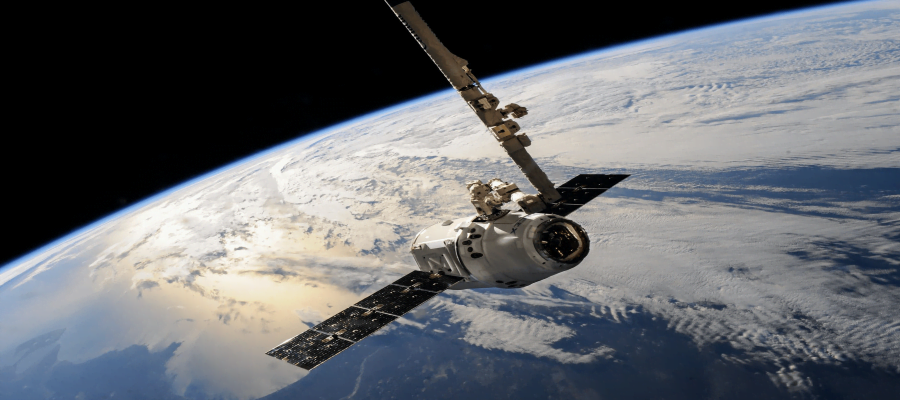Advances in SmallSat Technologies: What Small Cameras Are Used
by Abdul Aziz Mondal Technology Published on: 08 April 2022 Last Updated on: 26 September 2024

Today, satellites are becoming smaller than their conventional cousins, all thanks to modern technology. While these satellites may be smaller, the functionalities have improved, revolutionizing the world of a SmallSat camera and various other types of payloads.
Understandably, space technology will only continue to advance; this also implies that space missions types will also advance. Tiny satellites will continue to replace the heavier and more traditional counterparts for many applications like research studies, communication, and earth observation.
Such advancement in technology has also contributed to the design of the subsystems. For instance, older payloads like satellite imagery devices will be replaced by high-performance and ultra-light alternatives.
The Space Industry: Evolution

Of course, you cannot talk about SmallSat and other types of small satellites without mentioning satellite imagery devices. Since the first satellite launch in the 1950s, there have been some significant changes in the space industry.
For instance, several satellite camera types emerged and were adopted in the market, like nanosatellites, microsatellites, and minisatellites. Microsatellites gained popularity in the 1980s, mainly because they did not weigh more than 100kgs. These satellites were used for particular space missions like forward and store communications.
Later, nanosatellites started gaining traction because they did not weigh more than 10kgs. In today’s time, you will find small satellites that have a maximum weight of 1kg; these satellites have been termed picosatellites.
»Best Commercial-Off-The-Shelf Technology
The world of space technology and the industry is evolving each day; new technologies and rapid innovations are emerging very fast. SmallSat is now using the best commercial off-the-shelf technology like imagery devices, communication systems, and onboard computers.
With the help of these technologies, you now have a more novel and cheaper way to launch satellites for space exploration and earth observation missions. As the satellites start getting more complex and smaller, the payloads are becoming more compact and capable.
For instance, let us take the example of satellite cameras. These imagery devices are becoming more complex to take clear pictures from space. There is a demand for quality services and reliability today.
About Satellite Camera Systems

The first thing we need to learn is what is satellite camera. SmallSat imagery devices are satellite cameras that take pictures from space. These cameras consist of components like an onboard computer, communication units, solar cells, receivers, sensors, and a power supply unit. Most of these camera systems are for earth observation, technology demonstration, and scientific studies.
These systems withstand and work in the most extreme conditions. These devices capture images in the form of electromagnetic waves. They are fitted with sensors that register the signals emitted or reflected by the earth objects or the surrounding areas.
Now, let us learn how a satellite smallsat camera works. These cameras can capture hyperspectral, multispectral, and panchromatic images. Only accurate and highly reliable payloads are capable of capturing high-resolution images. Perhaps the best example would be the images that you see on Google Maps.
♦Compact Design With Complex Functionalities
Apart from having a compact design, these cameras also need to perform complex functionalities. Most mini space cameras that you can find in the market work ideally for space exploration, similar to aerospace cameras.
But, you will also find some that work for specific types of space missions. For instance, some cameras are fitted with hyperspectral imaging features to capture narrow spectral zones on a spectral range. Some important uses of smallsat satellite cameras include:
♦Earth Observation
As you can guess by the name, these are cameras typically used to capture high-quality images of the earth from the lower earth orbit. In most cases, these cameras come with high-tech and compact smallsat electrical components.
♦Space Adventures And Exploration
Today, it is not uncommon for space exploration companies and governments to launch satellites primarily for space exploration. These satellites come with specialized payloads (in this case, cameras); these cameras will capture images in space and send them back to the earth.
How To Choose The Right Satellite Camera?

Before you learn how to use the smallsat satellite camera, you must understand the concept of choosing the right one. There are various factors that you need to consider. For instance, the size should be proportionate to the size of the satellite.
Some other factors you need to remember are the mass of the camera and the maximum mass of the satellite, including the payload.
Of course, it is always recommended that you fit a camera used for various purposes. Thankfully, space cameras manufactured today can easily integrate with most modern satellite designs. Some other factors you should consider include the following.
◊Resolution
Various aspects determine the smallest size that can be captured. This is also known as ground sampling distance (GSD). Most cameras you find in the market today offer hyperspectral and multispectral imagery with high resolution.
◊Design
Of course, the smallsat camera device needs to be designed so that it can withstand harsh conditions without compromising the quality of the images. Additionally, the camera should also last as long as the satellite.
Final Thoughts
As you can see, there are many advantages of using the smallsat cameras for space exploration and earth observation. In most cases, these cameras are quite accurate and reliable. Of course, picking the right camera will eventually depend on the size of the satellite and the type of mission.
Eager to add something of value? Let us know in the comments section!
Read Also:



































































































